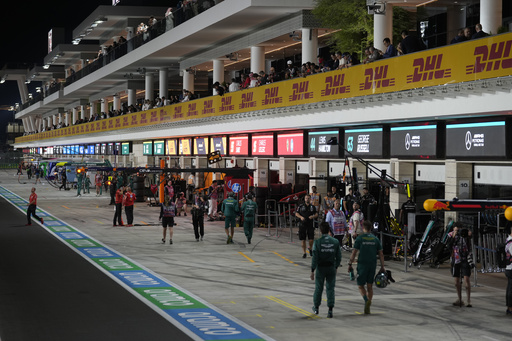
LUSAIL, Qatar — The road ahead for General Motors and Cadillac in their pursuit to compete in Formula 1 by 2026 poses a “monumental task,” as stated by figures within the racing series. On Monday, it was announced that Cadillac will be the 11th team on the grid, a revelation that has generally been welcomed by drivers.
With significant regulatory transformations in store for cars and engines in 2026, Cadillac may find itself in a unique position. Other current teams are prohibited from engaging in essential preparation for these upcoming regulations, including aerodynamics testing in wind tunnels, until January 1, which could potentially give Cadillac an edge. Yet, Aston Martin team principal Mike Krack expressed concerns over the challenges involved: “Forming a new team with entirely different regulations in mind is no small feat,” he mentioned at the Qatar Grand Prix, adding that any initial advantage would likely diminish quickly.
According to Williams team principal James Vowles, General Motors will face financial constraints imposed by the F1 cost cap as they gear up for their debut, intensifying the competition ahead. He also pointed out that many aerodynamic rules remain undecided, which only complicates the timeline and planning for the new team. “While 2024 might appear to offer a preliminary advantage, by the time January arrives, all teams will be constrained by the regulations, making their challenge all the more daunting,” remarked RB team principal Laurent Mekies.
Speculation is rife regarding the preparations undertaken by the GM-affiliated team. In the previous year, under Michael Andretti’s leadership, the team developed a car tailored to the 2023 guidelines for wind tunnel assessments. GM is currently in the process of hiring personnel for a facility positioned near Silverstone in England. It is anticipated that the team will initially utilize Ferrari engines until they can debut their own Cadillac engine, expected in 2028.
Team principals are urging for clarity regarding financial aspects, particularly concerning how existing teams will be compensated with a smaller share of revenue. Vowles emphasized that having GM at the forefront represents a significant shift compared to the earlier Andretti-led proposal. “This indicates the expansion of the sport and its future trajectory,” he noted. “The new setup will inevitably result in financial losses for established teams, so it’s crucial that we enhance the sport sufficiently while considering the impacts on everyone involved.”
Drivers also view Cadillac’s entry as a promising development. For those at risk of leaving F1, the arrival of a new team could present fresh opportunities. Valtteri Bottas, a seasoned driver with ten race victories, stated, “This just increases my chances of securing a seat in 2026.” Bottas, who will soon depart Sauber and is close to becoming Mercedes’ reserve driver, expressed interest in approaching Cadillac about a potential role in the new team, emphasizing the brand’s significance and GM’s considerable backing.
Likewise, Zhou Guanyu, Bottas’ teammate and the first Chinese driver in Formula 1, shared his thoughts: “If there’s an opportunity available, I will definitely seize it.”
